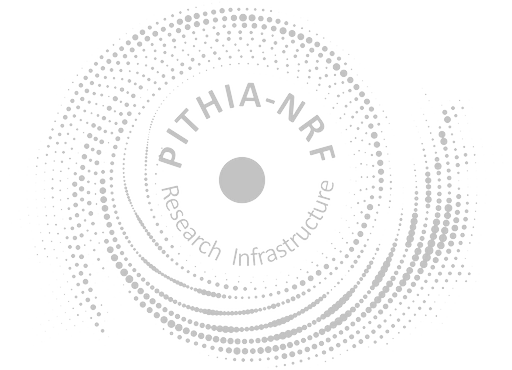<?xml version="1.0" encoding="UTF-8"?>
<Project xmlns="https://metadata.pithia.eu/schemas/2.2" xmlns:xsi="http://www.w3.org/2001/XMLSchema-instance" xmlns:xlink="http://www.w3.org/1999/xlink" xmlns:gmd="http://www.isotc211.org/2005/gmd" xmlns:gco="http://www.isotc211.org/2005/gco" xsi:schemaLocation="https://metadata.pithia.eu/schemas/2.2 https://metadata.pithia.eu/schemas/2.2/pithia.xsd">
<identifier>
<PITHIA_Identifier>
<localID>Project_IASB_Cluster</localID>
<namespace>iasb</namespace>
<version>1</version>
<creationDate>2022-09-13T17:00:00Z</creationDate>
<lastModificationDate>2022-09-13T17:00:00Z</lastModificationDate>
</PITHIA_Identifier>
</identifier>
<name>Cluster</name>
<shortName>CLUSTER</shortName>
<abstract>
The aim of the ESA Cluster mission is to study small-scale structures of the magnetosphere and its environment in three dimensions.
To achieve this, Cluster is constituted of four identical spacecraft that will flight in a tetrahedral configuration. The separation
distances between the spacecraft will be varied between 600 km and 20 000 km, according to the key scientific regions.
</abstract>
<description>
The ESA Cluster mission is a key European resource for high-quality in-situ data on plasma conditions in the magnetosphere,
composed of 4 identical satellites with 11 instruments onboard each spacecraft. In recent years, its orbit evolution has allowed
Cluster to sample the inner magnetosphere and this will continue for several more years as ESA has just extended the mission to 2014.
The separation distance between the spacecraft is adjusted depending on the regions of interest crossed by the tetrahedron and on
the spatial scales of the structures to be studied; it varies from hundred kilometres to a few Earth radii. In particular, the
satellites cross the plasmasphere every 50 hours at different altitudes, latitudes and MLT sectors. These data are openly available
via ESA's Cluster Science Archive (CSA, http://www.cosmos.esa.int/web/csa), which is now located at ESAC, Madrid, Spain.
</description>
<URL><gmd:URL>http://sci.esa.int/cluster/</gmd:URL></URL>
<documentation>
<Citation>
<gmd:title><gco:CharacterString>The Cluster and Phoenix Missions</gco:CharacterString></gmd:title>
<date xmlns="http://www.isotc211.org/2005/gmd">
<CI_Date>
<date><gco:Date>1997-01-01</gco:Date></date>
<dateType>
<CI_DateTypeCode codeList="" codeListValue="">Cover Date</CI_DateTypeCode>
</dateType>
</CI_Date>
</date>
<identifier xmlns="http://www.isotc211.org/2005/gmd">
<MD_Identifier><code><gco:CharacterString/></code></MD_Identifier>
</identifier>
<gmd:otherCitationDetails>
<gco:CharacterString>
Escoubet C. P., Russell C. T. and Schmidt R. (Eds.), Kluwer Academic Publishers, 658 pp., 1997
</gco:CharacterString>
</gmd:otherCitationDetails>
<onlineResource>
<CI_OnlineResource xmlns="http://www.isotc211.org/2005/gmd">
<linkage>
<URL>http://www.springer.com/astronomy/astrophysics+and+astroparticles/book/978-0-7923-4411-7</URL>
</linkage>
</CI_OnlineResource>
</onlineResource>
</Citation>
</documentation>
<keywords>
<MD_Keywords xmlns="http://www.isotc211.org/2005/gmd">
<keyword><gco:CharacterString>Cluster</gco:CharacterString></keyword>
<keyword><gco:CharacterString>Satellite</gco:CharacterString></keyword>
<keyword><gco:CharacterString>Magnetosphere</gco:CharacterString></keyword>
<type><MD_KeywordTypeCode codeList="#pr1" codeListValue="Observed Region"/></type>
</MD_Keywords>
</keywords>
<relatedParty>
<ResponsiblePartyInfo>
<role xlink:href="https://metadata.pithia.eu/ontology/2.2/relatedPartyRole/PointOfContact"/>
<party xlink:href="https://metadata.pithia.eu/resources/2.2/individual/iasb/Individual_IASB_Darrouzet"/>
</ResponsiblePartyInfo>
</relatedParty>
<relatedParty>
<ResponsiblePartyInfo>
<role xlink:href="https://metadata.pithia.eu/ontology/2.2/relatedPartyRole/DataProvider"/>
<party xlink:href="https://metadata.pithia.eu/resources/2.2/organisation/pithia/Organisation_IASB"/>
</ResponsiblePartyInfo>
</relatedParty>
<status xlink:href="https://metadata.pithia.eu/ontology/2.2/status/OnGoing"/>
</Project>

